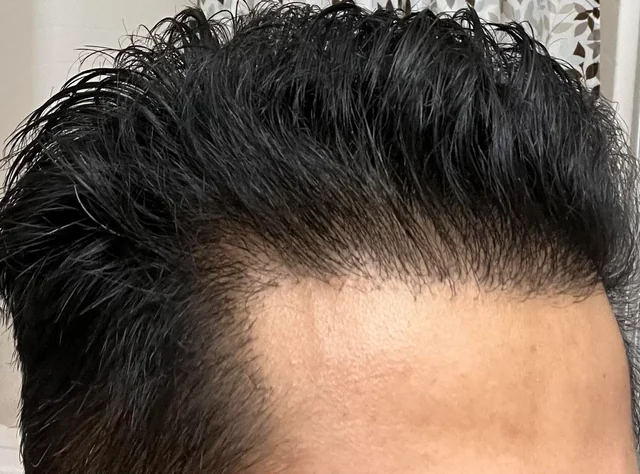FUE vs. FUT: Choosing the Right Technique for Large or Small Areas in Dubai UAE

Hair transplant tactics have won considerable reputation for his or her effectiveness in addressing hair loss. Among the numerous techniques, Follicular Unit Extraction (FUE) and Follicular Unit Transplantation (FUT) stand out because the maximum common strategies. While both goal to restore hair in regions of thinning or baldness, their suitability regularly depends on the dimensions of the treatment vicinity. This article explores the differences among FUE and FUT, supporting you make a decision which technique is nice for big or small regions.
Understanding FUE and FUT
Before diving into their suitability for specific vicinity sizes, it’s vital to understand how FUE and FUT work:
FUE (Follicular Unit Extraction): This technique includes extracting character follicular units (hair follicles) from the donor area the use of a small punch device. The follicles are then implanted into the recipient area. FUE leaves minimal scarring and has a shorter restoration time.
FUT (Follicular Unit Transplantation): Also known as the strip method, FUT entails surgically casting off a strip of scalp from the donor location, generally the returned of the head. The strip is dissected into man or woman follicular gadgets, which are implanted into the recipient place. FUT can also leave a linear scar but allows for harvesting a bigger range of grafts in one consultation.
Choosing the Right Technique for Small Areas
For smaller treatment regions, including a receding hairline, temples, or eyebrow recuperation, FUE is regularly the preferred preference. Here’s why:
Precision and Natural Appearance: FUE’s capability to extract person follicles ensures precise graft placement, which is critical for achieving a herbal look in regions just like the hairline.
Minimal Scarring: Since FUE makes use of tiny punches to extract follicles, the scars are almost imperceptible. This makes it best for patients who favor to wear short hairstyles.
Fewer Grafts Required: Small regions commonly require fewer grafts, which can be correctly harvested thru FUE without the need for a strip excision.
Quick Recovery: FUE’s minimally invasive nature consequences in quicker recovery, making it handy for sufferers concentrated on smaller regions.
FUT for Small Areas: When It’s an Option
While FUT is much less normally chosen for small regions, it may nonetheless be a feasible option in positive instances:
Budget Constraints: FUT is often more value-powerful than FUE on a in step with-graft foundation. Patients seeking affordability for a small region may consider this technique.
Donor Hair Conservation: FUT permits surgeons to harvest a excessive range of grafts whilst maintaining the surrounding donor vicinity for destiny methods.
Choosing the Right Technique for Large Areas
For large treatment areas, inclusive of big crown thinning or entire baldness, the choice among FUE and FUT depends on several elements:
FUE for Large Areas:
No Linear Scar: FUE’s lack of a visible linear scar makes it a great preference for patients who value aesthetic outcomes, specifically the ones liable to sporting quick hairstyles.
Gradual Sessions: Large areas frequently require a couple of classes, and FUE’s flexibility lets in for gradual coverage over the years.
Donor Area Limitations: For very massive areas, FUE can be limited by means of the availability of donor hair, as extracting too many grafts in a single consultation can pressure the donor location.
FUT for Large Areas:
Higher Graft Yield: FUT can harvest a larger number of grafts in a unmarried session, making it extra efficient for substantial coverage.
Cost Efficiency: Because FUT usually yields more grafts consistent with consultation, it may be more fee-powerful for sufferers desiring a excessive volume of transplants.
Preserving Donor Hair: FUT minimizes over-harvesting within the donor place, leaving enough hair for ability destiny strategies.
Factors to Consider When Choosing Between FUE and FUT
Scarring:
FUE leaves tiny, dot-like scars which can be difficult to detect.
FUT leaves a linear scar, which may be concealed by way of longer hairstyles but may be substantial with short cuts.
Recovery Time:
FUE has a shorter recovery time due to its minimally invasive nature.
FUT calls for more restoration time because it entails a surgical incision.
Donor Area Characteristics:
Patients with limited donor hair may also advantage greater from FUT, as it permits for higher graft extraction in one session.
FUE is higher for patients with thicker, denser donor regions, as man or woman follicle extraction is simpler.
Hair Goals and Density:
FUE gives more flexibility in attaining high density in precise areas.
FUT is greater desirable for protecting massive regions fast.
Budget:
FUE is generally extra high-priced on a according to-graft basis.
FUT can be extra low cost for sufferers requiring a high quantity of grafts.
Combining FUE and FUT
In some instances, surgeons may also advocate combining both techniques to reap greatest outcomes. For example, FUT can be used to reap a massive quantity of grafts in the initial consultation, at the same time as FUE can refine specific regions, together with the hairline, for a natural look. This hybrid method guarantees most coverage and density whilst keeping the donor place.
Final Thoughts
The choice among FUE and FUT in the end depends on the dimensions of the treatment place, your hair healing dreams, and private possibilities. For small areas, FUE’s precision and minimum scarring make it an extraordinary alternative. For large regions, FUT’s performance and cost-effectiveness may be effective. Consulting with a qualified hair transplant health care professional is crucial to decide the first-class approach in your particular situation. By carefully weighing the pros and cons of each approach, you could achieve a successful, herbal-searching final results.
